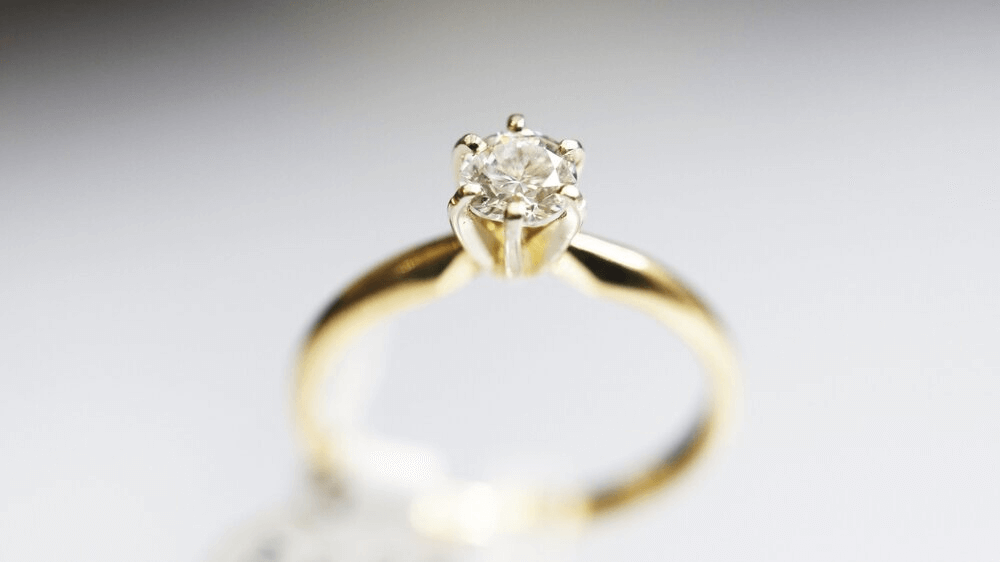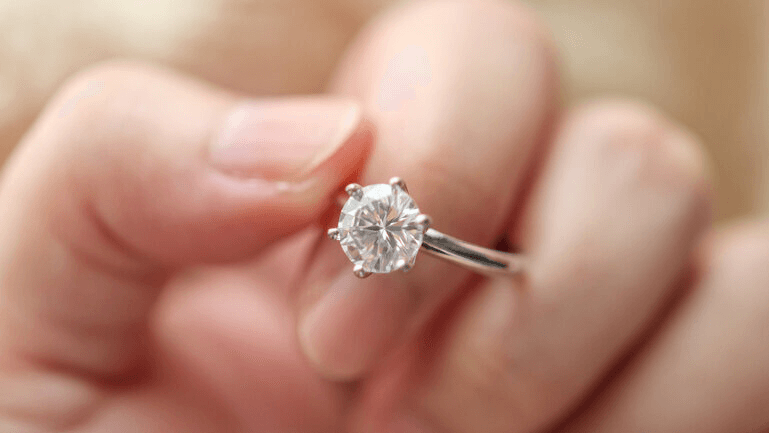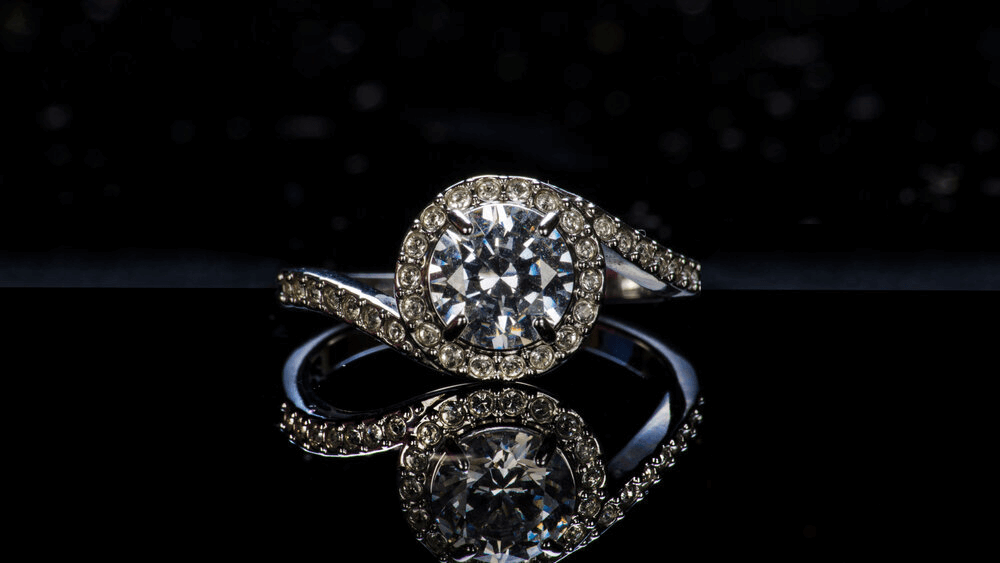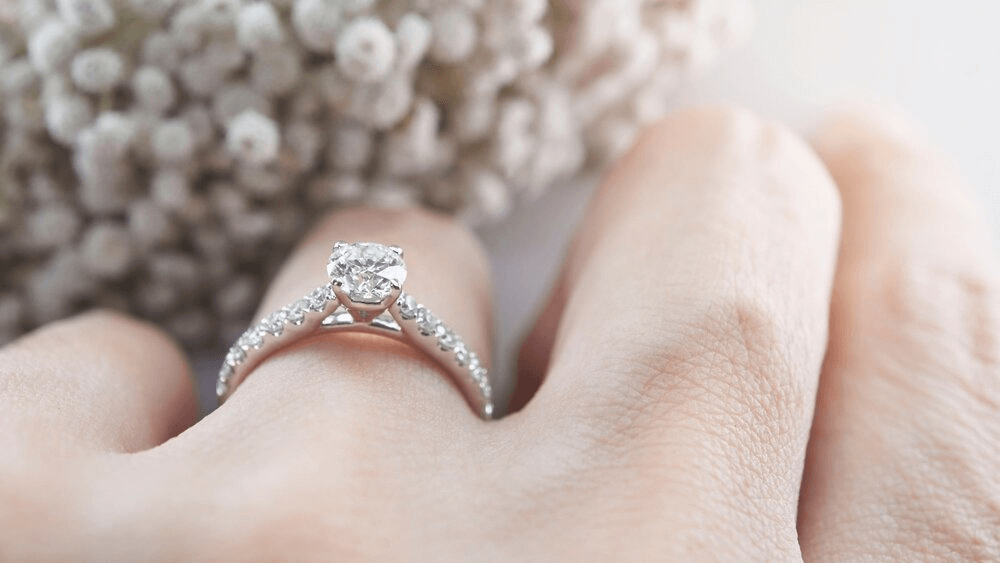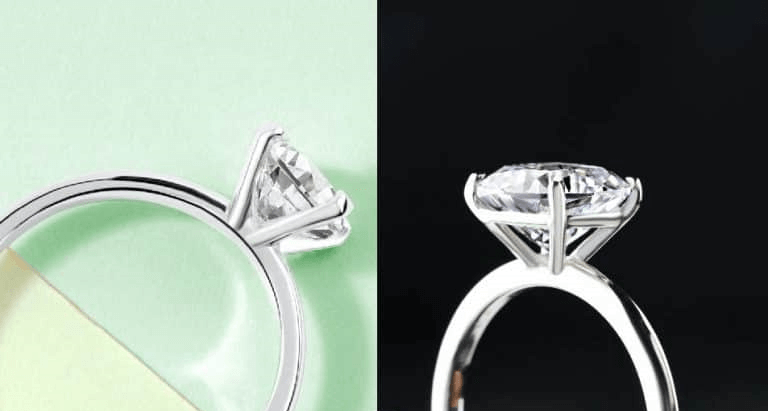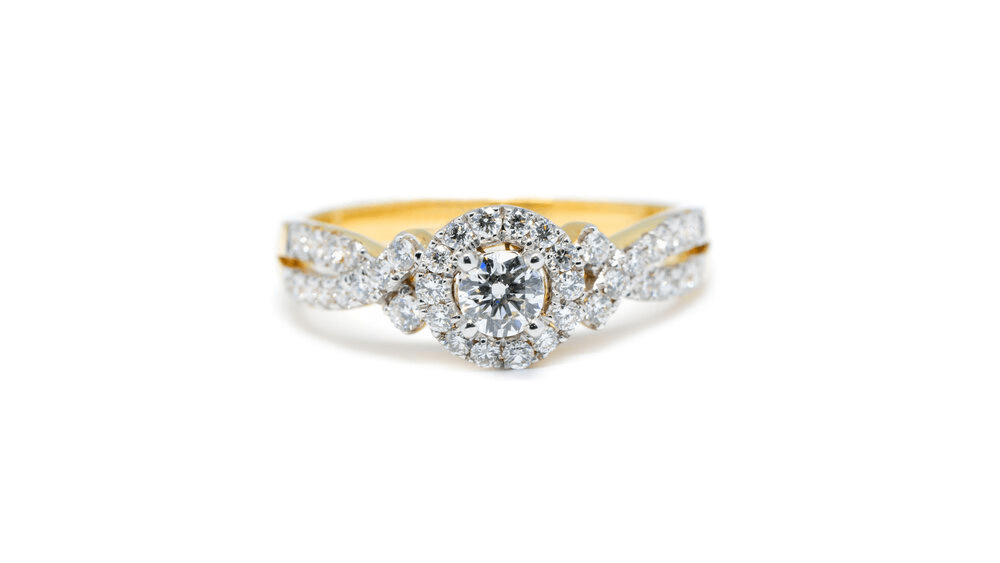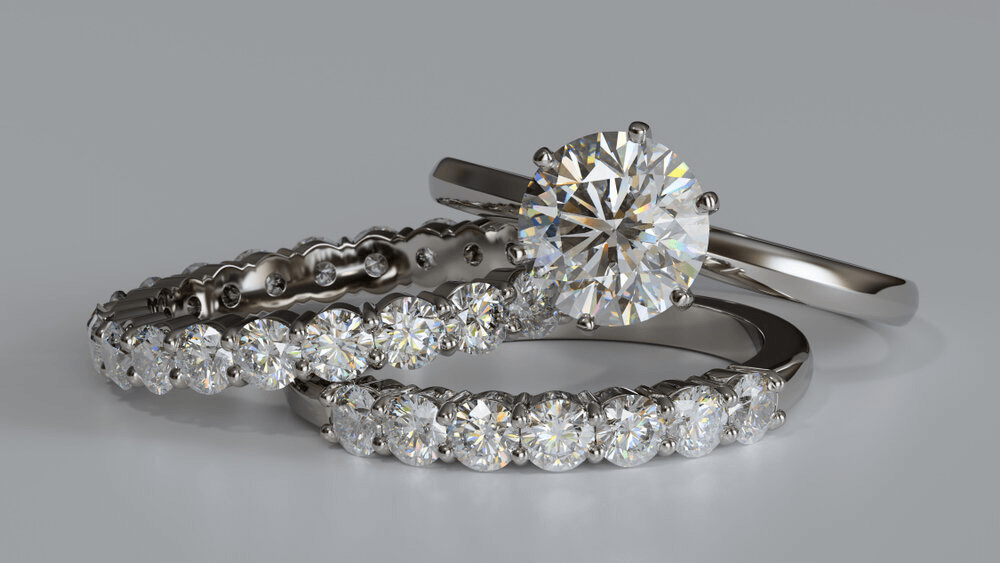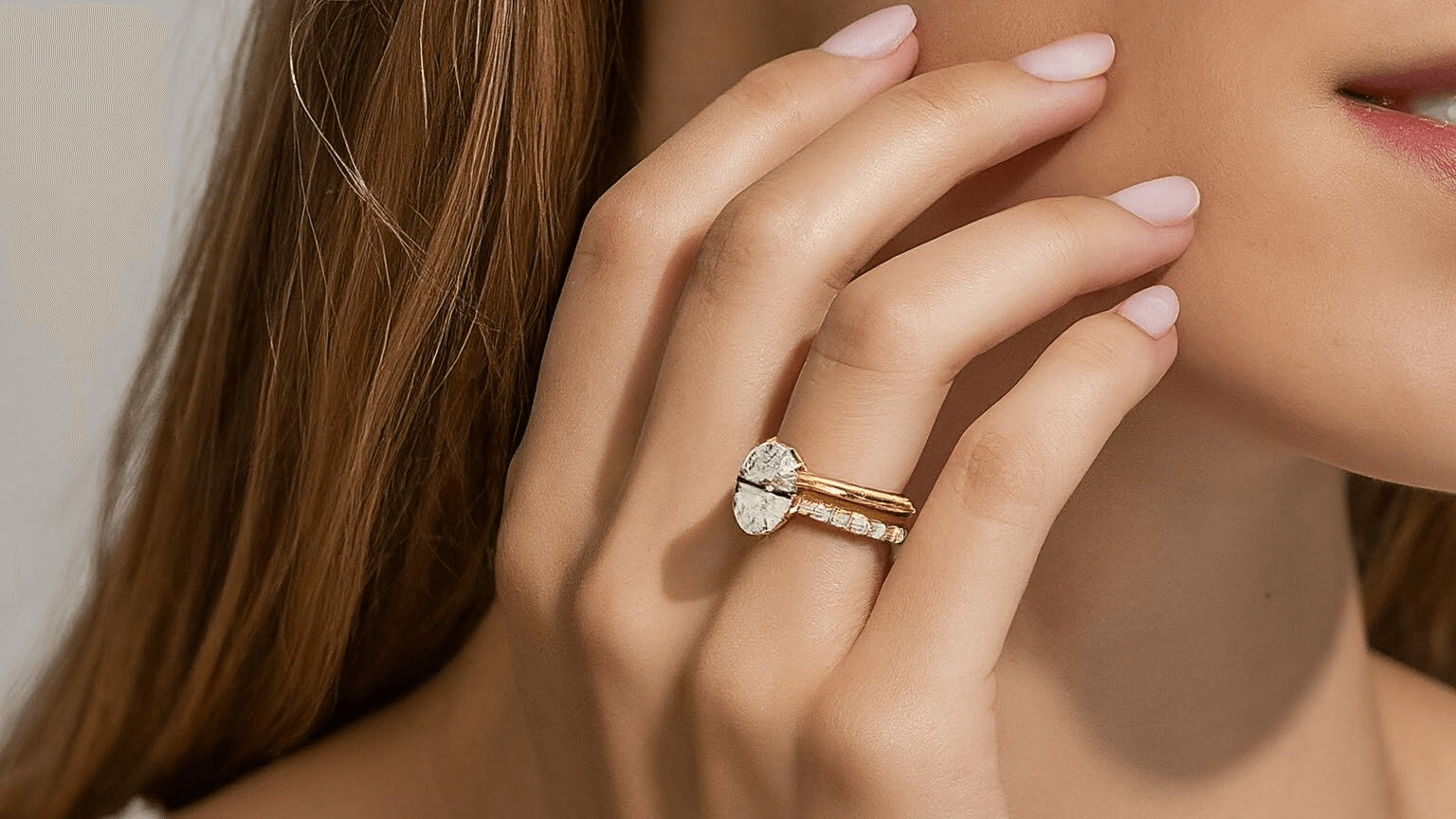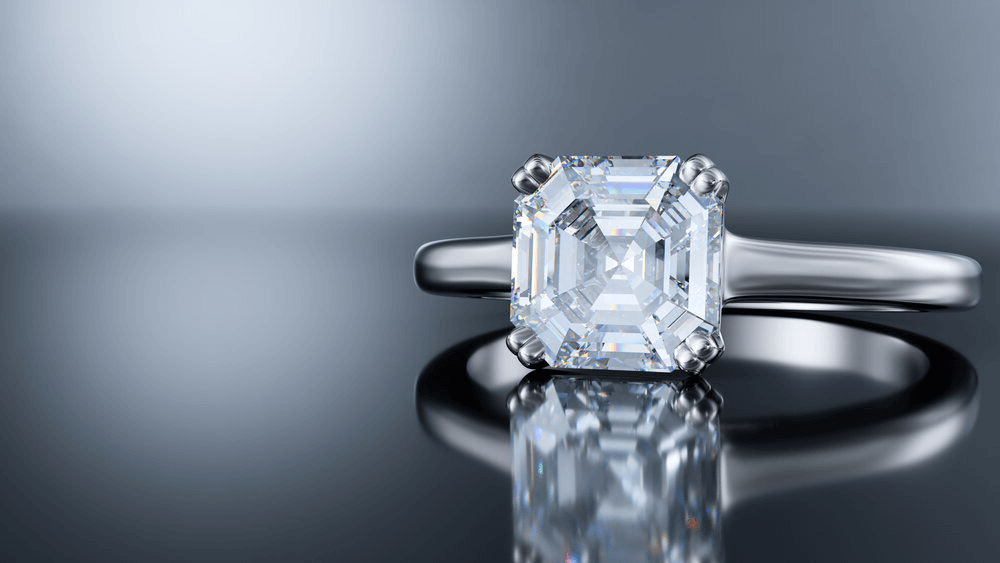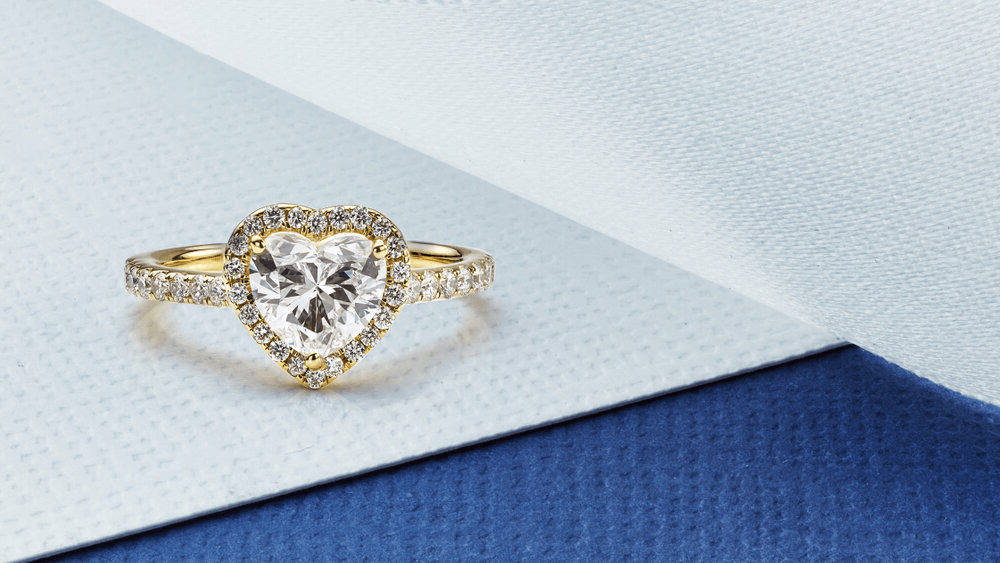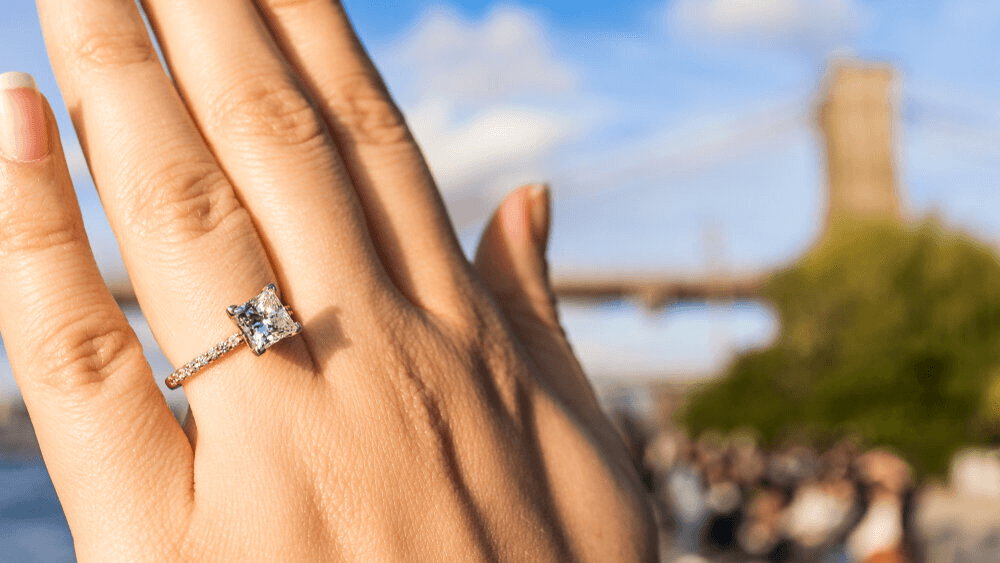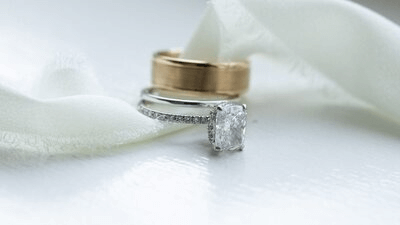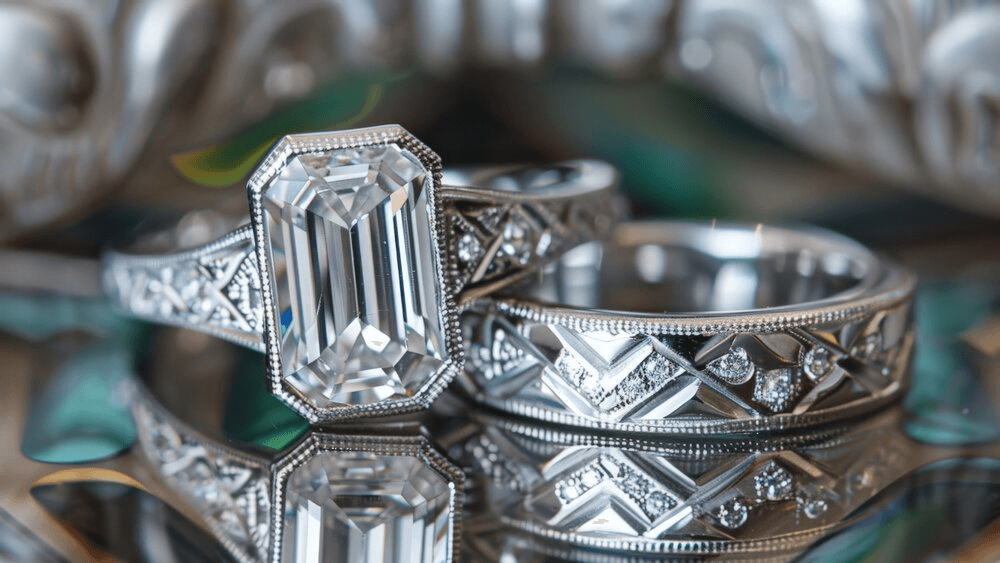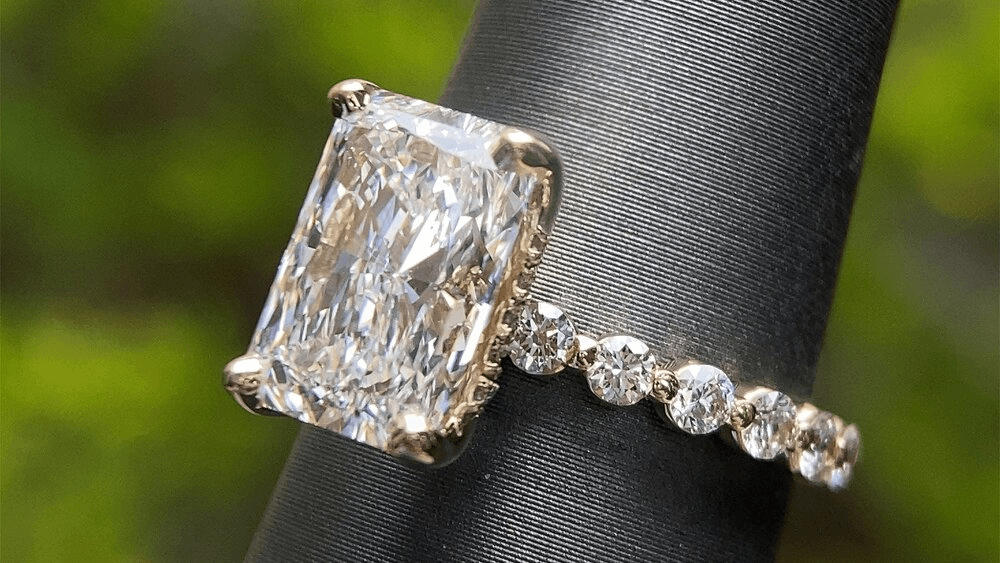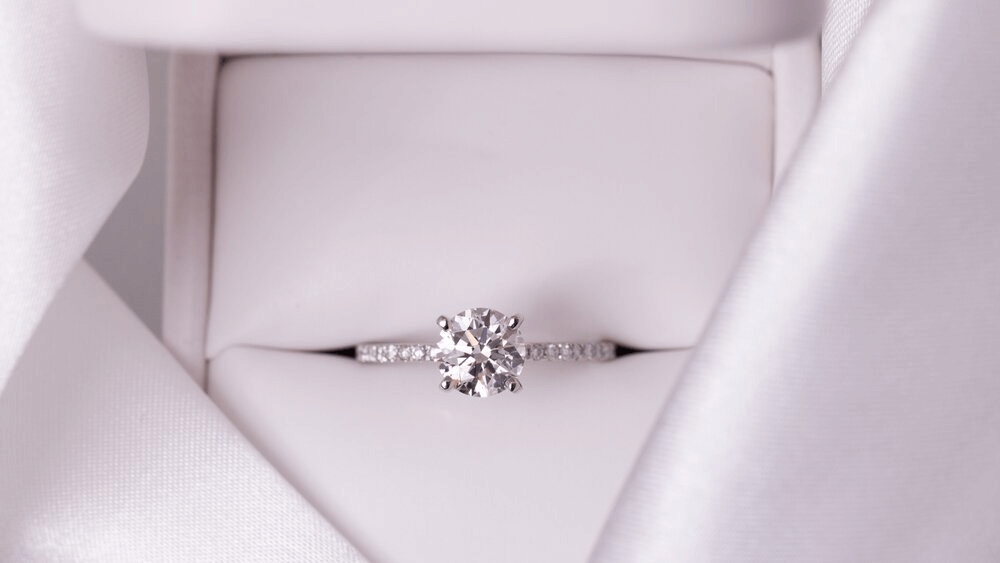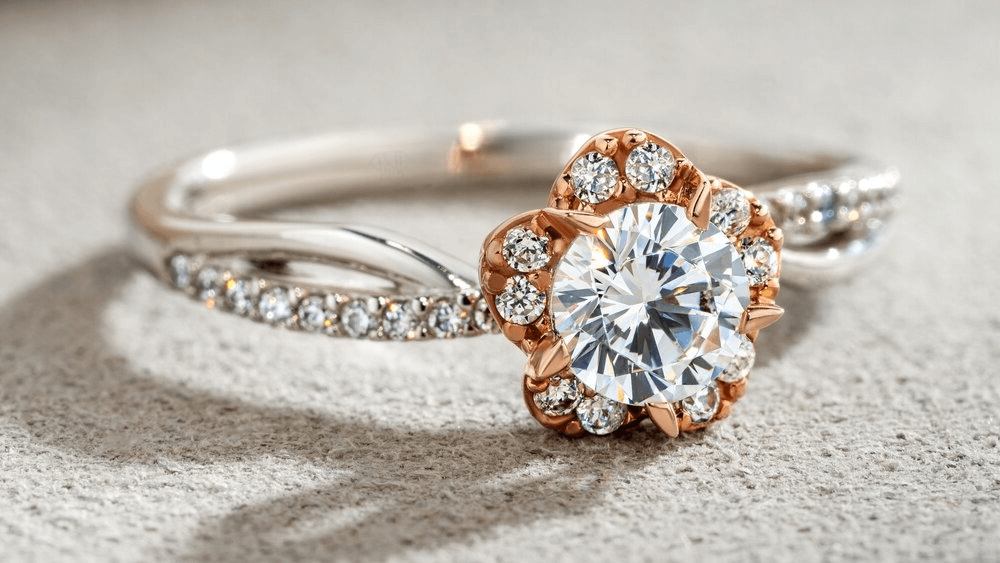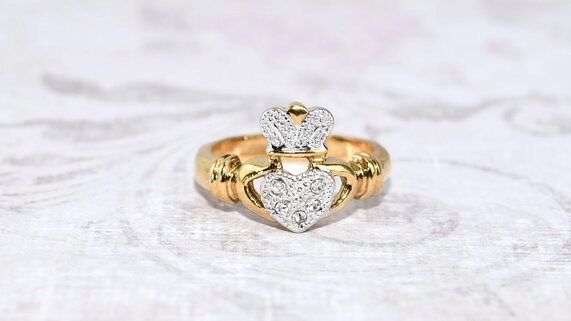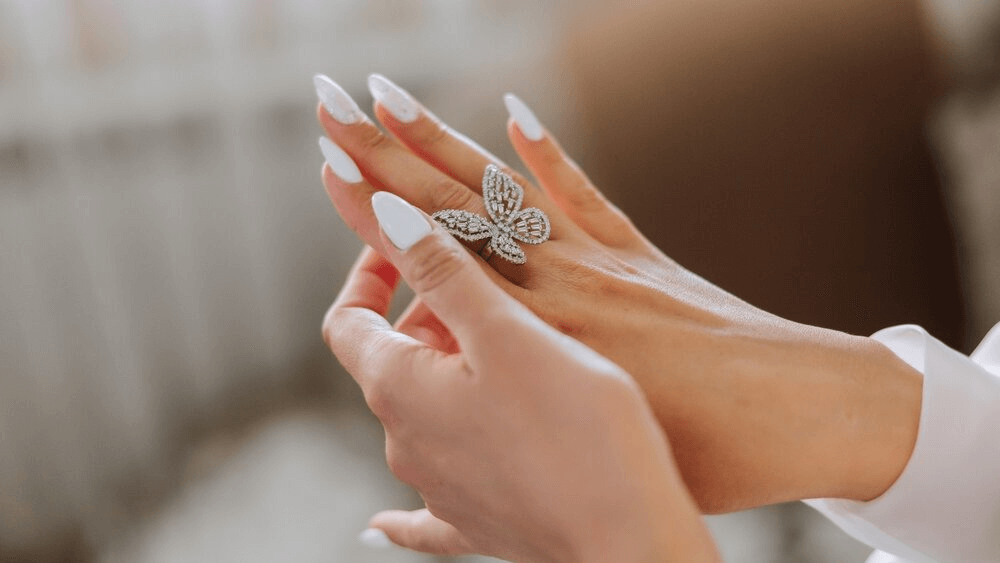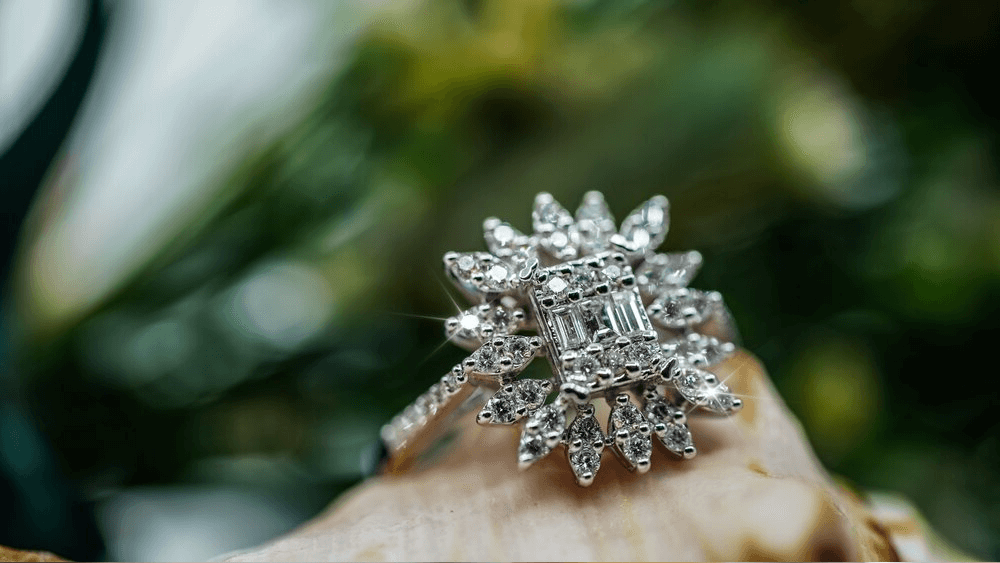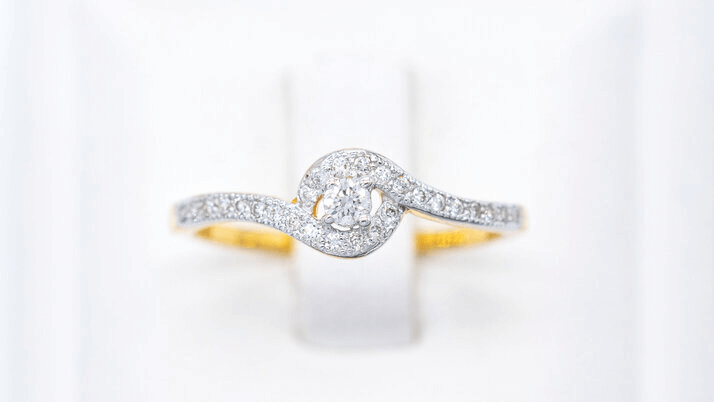Channel Set vs Pavé: Master Diamond Bands for Your Ring

By Gary A.

Edited by Olivia H.
Published Mar 12, 2022
Edited on Dec 18, 2024
When deciding between channel set vs pavé, understanding the distinct styles and sparkle each setting offers is key to choosing the perfect diamond band that fits both your aesthetic and practical needs.

Navigate This Guide:
- 7 Quick Tips for Buying a Channel Set Diamond Engagement Ring
- Introduction to Diamond Band Settings
- Durability and Security
- Ring Resizing Channel and Pavé Rings
- Aesthetics vs Practicality
- Ring Maintenance
- Our Expert Take
- 10 FAQs
Before we dive deeper into the specifics, here are some practical tips to help guide your decision-making process:
7 Quick Tips for Buying a Channel Set Diamond Engagement Ring
- Tip 1:Understand the Channel Setting’s Durability Tip: Examine the thickness of the channel walls. Thicker walls offer more protection for the diamonds, reducing the likelihood of stones loosening over time. Why It Matters: A well-constructed channel setting enhances the ring’s durability, ensuring the diamonds remain secure even with daily wear.
- Tip 2:Check the Alignment of Channel Set Stones Tip: Look closely to ensure that the diamonds are aligned perfectly within the channel. Misalignment can affect the ring’s aesthetic and the security of the stones. Why It Matters: Proper alignment not only contributes to the ring’s beauty but also prevents potential damage or loosening of the stones.
- Tip 3:Inspect the Quality of the Diamonds Tip: Pay attention to the clarity and color of the channel set diamonds. They should complement the center stone and have consistent quality throughout. Why It Matters: The quality of these smaller diamonds impacts the overall brilliance and appearance of the ring, enhancing its visual appeal.
- Tip 4:Consider the Metal Type and Purity Tip: Choose a metal that offers both beauty and strength, such as platinum or high-quality gold. The metal should support the channel set securely. Why It Matters: The right metal not only frames the diamonds beautifully but also provides the necessary strength to hold them in place effectively.
- Tip 5:Evaluate the Ring’s Comfort and Fit Tip: Try on the ring to ensure it feels comfortable between your fingers, especially if it has diamonds set around the band. Why It Matters: A comfortable fit is crucial for an engagement ring, as it will likely be worn daily. The channel setting should not cause irritation or discomfort.
- Tip 6:Analyze the Ring’s Resizing Potential Tip: Understand the limitations of resizing a channel set ring, especially if it has diamonds set all around the band. Why It Matters: Future resizing can be challenging for full channel set rings. It’s essential to choose a ring that allows for possible size adjustments without compromising the setting.
- Tip 7:Scrutinize the Ring’s Overall Craftsmanship Tip: Assess the craftsmanship, including the finish and polish of the metal, and how seamlessly the diamonds are set into the channel. Why It Matters: Superior craftsmanship not only enhances the ring’s beauty but also ensures its longevity and the security of the diamond setting.
Now that you’ve got these practical tips, use Jeweler AI below to find the perfect engagement ring that suits your style and budget:
Introduction to Diamond Band Settings
One of the most effective, timeless, and elegant ways to introduce a little more sparkle into your ring’s design is to add a series of smaller diamonds into the shank (band).
In the majority of rings we see day-to-day, this is achieved using the pavé setting, which utilizes tiny prongs or metal beading to keep those tiny diamonds in place.
The result is, of course, beautiful. It’s one of the daintiest, most intricate options for creating a piece that sparkles with fire and brilliance from every angle.
There is, however, an equally attractive alternative. The channel setting shares a lot of similarities with the pavé setting, but once you understand the difference you will find it easy to differentiate between the two – and to understand why some shoppers prefer it.
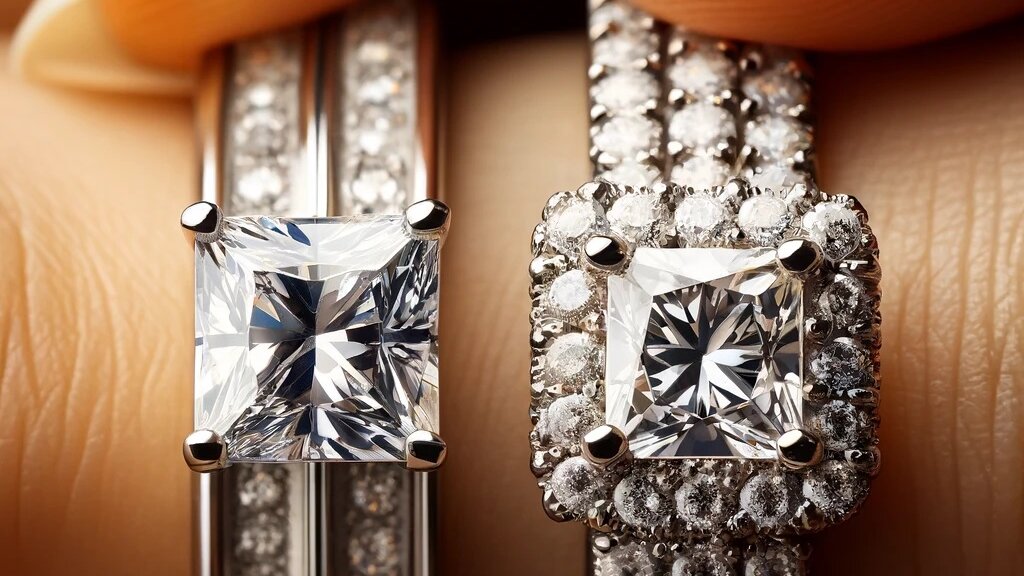
Understanding DIamond Band Channel Set Rings
A channel set is a band decorated with a series of small accent diamonds, held in place within a narrow channel cut into the band itself, rather than any additional metalwork. The edge of the channel protrudes very slightly over the edge of the diamond, stopping it from falling out.
The style is great for engagement rings and wedding bands, and it’s the likelier choice if you want your shank to be decorated with diamonds that aren’t Round Brilliant.
While Round diamonds can (and often are) used in the channel setting, Princess or Baguette cut diamonds are not typically used in Pavé settings, so this is the more versatile choice in that respect.
Understanding Pavé Band Settings
The pavé design features many small melee diamonds set along the band of the ring and held in place by very small prongs – a lot like the prongs holding the center stone, just smaller!
The diamonds used to create a pavé setting are generally smaller than the diamonds found in channel set bands, but not necessarily. Jewelers can reimagine both settings to create something unique – it all depends on what you’re looking for.
Design and Aesthetics
Diamond band channel set rings sparkle, but you may notice a slight loss of sparkle when you compare a channel set ring with a French pavé ring.
This is simply because of the fact that a French pavé setting allows a lot more light to reach the diamonds, particularly on the sides. Designed to expose a ‘v’ shape side profile of each pavé diamond used, this setting is a lot more delicate than the channel setting but will help the stones’ light performance play out better.
In a channel setting, only the table and crown of the diamonds are visible. When light moves across the surface, it will sparkle and reflect off the diamond, but light performance will be a little more limited.
Still, the effect is beautiful, and if you’ve got an excellent center stone, a slightly more subdued sparkle from the accent stones shouldn’t be a dealbreaker for you. As you can imagine, Baguette diamonds will sparkle less than Princess cut diamonds, and Round cut diamonds will sparkle even more than that. It’ll be subtle, but powerful.
Durability and Security
It’s very, very unlikely that diamonds will fall from a channel setting, since the diamonds are held in place by a single ‘lip’ of metal, rather than individual (and very small) prongs.
We’re not suggesting that the pavé isn’t a safe and secure choice for an engagement ring, because it is. Provided your ring is crafted by a reputable jeweler, either a pavé or a channel setting will be a very secure choice – even for a ring that’s going to be worn every single day.
In both cases, you’ll want to remove your ring for sports, showers, baths, and bed – primarily to avoid dust, dirt, grease, and grime from gradually accumulating around the tiny diamonds.
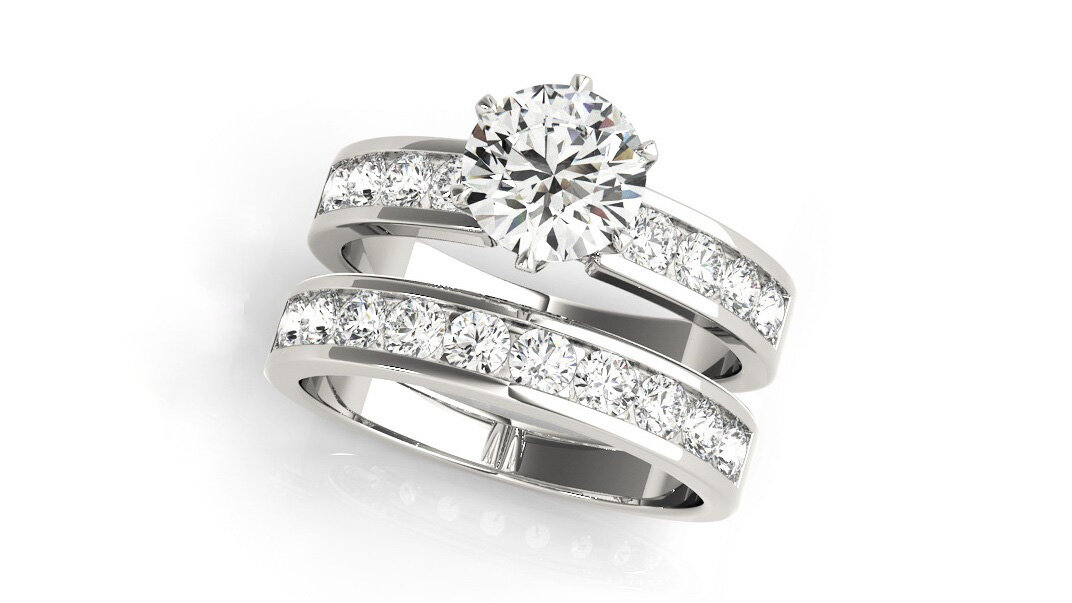
Ring Resizing Channel and Pavé Rings
If you’re wondering whether you can resize a channel ring, in some cases, it’s a possibility, but if the entire band is channel set, then it’s unlikely you will be able to get it resized.
This is why a lot of people prefer not to get the entire band channel set. A half eternity band, where the channel setting ends halfway around the finger, and covers the ‘shoulders’ of the shank, is the safer choice if you’re not totally sure about your partner’s ring size, or would like to ensure that it’s possible to resize the ring in the distant future.
It’s an unfortunate misconception that any ring can be resized. In extreme cases, you’ll want to get the diamonds reset within a new ring design, but this is significantly more expensive than getting the band resized – or, better yet, measuring the wearer’s finger carefully before purchasing the ring itself.
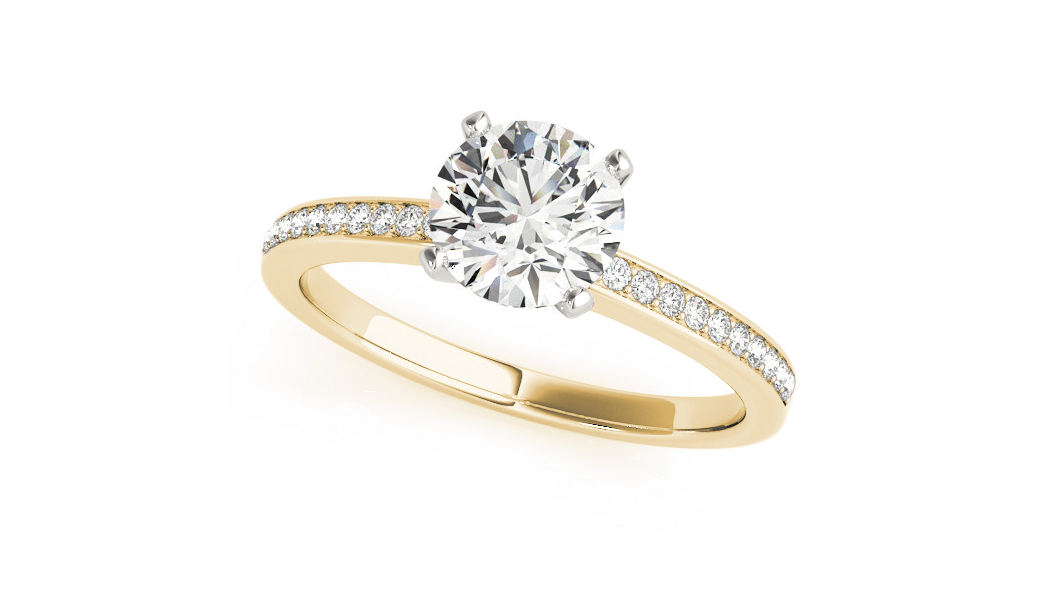
Aesthetics vs Practicality
Pavé rings look beautiful, and they’re designed to capture as much light as possible, but they’re not always the most convenient option for people who are busy and on-the-go, or people who aren’t used to wearing much jewelry – particularly on their fingers. While most pavé designs are comfortable, they do create a little more texture than channel set diamonds that are securely embedded within the metalwork of the ring itself.
If the ring’s intended wearer is a little fussier when it comes to comfort and convenience, then consider channel set as a strong alternative.
Ring Maintenance
When it comes to maintenance, you will be able to give the surface a clean and soak the ring in warm, soapy water to remove some grease and grime, but the channel setting may require the skill of a professional to clean.
This is because tiny bits of dust and grime can get into the channel, build up and, over time, dull the shine of your ring. This isn’t a big deal, since it’s a very good idea to bring your ring for an inspection and more thorough cleaning every six months or so anyway, but it’s something to keep in mind.
Jewelers have some advanced tools at their disposal, capable of deep cleaning jewelry without causing any damage or wear to the metals and precious stones. So, while you can do plenty at home, you can’t overlook the value of visiting a jeweler every once in a while.
Our Expert Take
Channel settings are classy, elegant, and great for adding a little extra sparkle to your ring without creating the ‘glittery’ effect of pavé since you will find the diamonds to be a little more subdued within this setting.
They are a particularly good choice if the ring you’re designing features an Art Deco style since you can utilize the sophisticated Baguette cut to great effect there. This technique looks particularly striking against a white gold or platinum shank, although creating that contrast with yellow gold (or even rose gold) will make for a classic backdrop for your diamond.
Channel settings are also great choices for wedding bands, and eternity rings. The added comfort created by the diamonds sitting more or less flush with the shank means that wearers don’t need to worry about the diamonds rubbing between their ring and middle finger, for instance.
In other words, the channel setting is a very strong choice. It’s a little less common than the pavé setting, but it’s important to keep in mind that part of the reason behind this is sparkle. With more light reaching pavé diamonds than channel diamonds, you’ll want to make sure you’ve weighed up your options thoroughly before settling.
Your best bet? Take a look at our online store for both setting styles before you settle on one or the other, and let your heart guide you the rest of the way.
10 FAQs
- Q: What is a channel set in a diamond band?
A: A channel set in a diamond band refers to a setting style where diamonds are nestled in a groove or channel within the band itself, providing a sleek and smooth finish. - Q: Are channel set diamonds secure?
A: Yes, channel set diamonds are quite secure. The channel’s walls hold each diamond snugly in place, reducing the risk of them falling out. - Q: Can channel set rings be resized?
A: Resizing channel set rings can be challenging, especially if diamonds encircle the entire band. However, rings with diamonds set only partway around can usually be resized with more ease. - Q: How do you clean a channel set diamond band?
A: Clean a channel set diamond band using mild soap and warm water, gently scrubbing with a soft brush. It’s advisable to have it professionally cleaned periodically to remove hard-to-reach dirt. - Q: Is a channel set more expensive than other settings?
A: The cost can vary, but channel sets might be slightly more expensive due to their intricate craftsmanship and the number of diamonds used. - Q: Do channel set diamonds sparkle less?
A: Channel set diamonds might sparkle slightly less than other settings, like pavé, as less light hits their sides. However, they still offer significant brilliance and allure. - Q: What types of diamonds are best for channel set bands?
A: Princess, baguette, and round cut diamonds are popular choices for channel sets, as their shapes fit well into the channel and offer a uniform, elegant look. - Q: Can channel set diamonds fall out?
A: While it’s rare, diamonds can loosen over time, especially with wear and tear. Regular checks and maintenance can prevent loss. - Q: Is a channel set ring suitable for everyday wear?
A: Yes, channel set rings are suitable for everyday wear as they have a smooth surface that’s less likely to catch on clothing and are durable. - Q: Can I have a custom channel set diamond band made?
A: Absolutely! Many jewelers offer custom designs where you can choose the diamond type, size, and metal for your unique channel set band.
Explore Jeweler AI‘s exquisite range of channel set diamond bands and transform your engagement ring vision into reality!
FOLLOW-UP GUIDE SERIES





